How to Use Affiliate Links to Get Maximum Pay
Affiliate links are unique URLs containing the marketer’s ID, used to track clicks, leads, and sales in exchange for commissions.
Common types include text links, button links, image links, and links in video descriptions, each with unique advantages.
To create affiliate links, join an affiliate program, get a unique link, and create custom links if necessary. Always test your links before implementation.
Use affiliate links properly. Balance link density, use descriptive anchor texts, disclose affiliate relationships, and keep links clean and readable.
Use various channels to promote your links, including website content, social media, email marketing, paid ads, and digital products. Always prioritize providing value to your audience.
It’s possible to use links from multiple affiliate programs on one site, but be cautious and always promote products you genuinely support.
Use tools like Google Analytics 4, Clarity, Hotjar, and SE Ranking to monitor affiliate link performance.
Affiliate marketing is an excellent way for brands and individual marketers to earn passive revenue. It also promotes the company being linked to, ultimately earning them additional sales.
Statista’s figures confirm that affiliate marketing is in high demand. Over the past five years, annual affiliate marketing spending in the US has increased by nearly 52%. This is a green light for marketers planning their digital strategies for the upcoming year.
Affiliate marketing is based on the use of affiliate links. In this post, we’ll cover what affiliate links are, the different types available, and how they work. We’ll also explore effective ways to create, promote, and track them. By the end of this post, you will know how to use affiliate links to increase your passive income and have various best practices and insights in your arsenal to make it happen.
A newbie on this path? Check out our complete affiliate marketing guide to learn how to get started with affiliate marketing and gain all the benefits while avoiding the pitfalls.
What is an Affiliate Link?
An affiliate link is a unique link that contains the affiliate marketer’s ID—unique information for tracking. It helps brands and affiliate programs keep track of how many clicks, leads, and sales each marketer is helping to drive so that brands can transfer the corresponding commission later.
Affiliate links send users to the appropriate page. This is often the page of a specific product, service, or software. For instance, as part of SE Ranking’s affiliate program, your unique link will take your visitors to a page where they can sign up for a subscription.
How Do Affiliate Links Work?
Whoever is working with the link—such as the affiliate marketer, digital marketer, SEO, or PPC manager—promotes the link across their online channels. For instance, they might share it on their website and social media platforms. Their audience can then learn about the product/brand to which the link directs them.
Whenever someone clicks on that link and makes a purchase, the link’s owner (like the affiliate marketer) will earn a previously determined commission.
However, other conditions may define when someone gets paid. You can also be paid a commission for clicks, traffic, or registrations.
The Most Popular Types of Affiliate Links
Affiliate links can be used in a few specific ways. Perhaps most commonly, you’ll run into text links. However, images can also be utilized as affiliate links. Moreover, videos can promote affiliate links.
Text affiliate links
As the name suggests, text links are added to the textual content and look like regular links. An anchor text—a clickable word or word combination that describes the page that is linked to—will usually be a brand name or a keyword describing a particular product or service.
Here is an example of a text link with branded anchor text (both the button and the piece of text from the paragraph are linked to the affiliated brand):
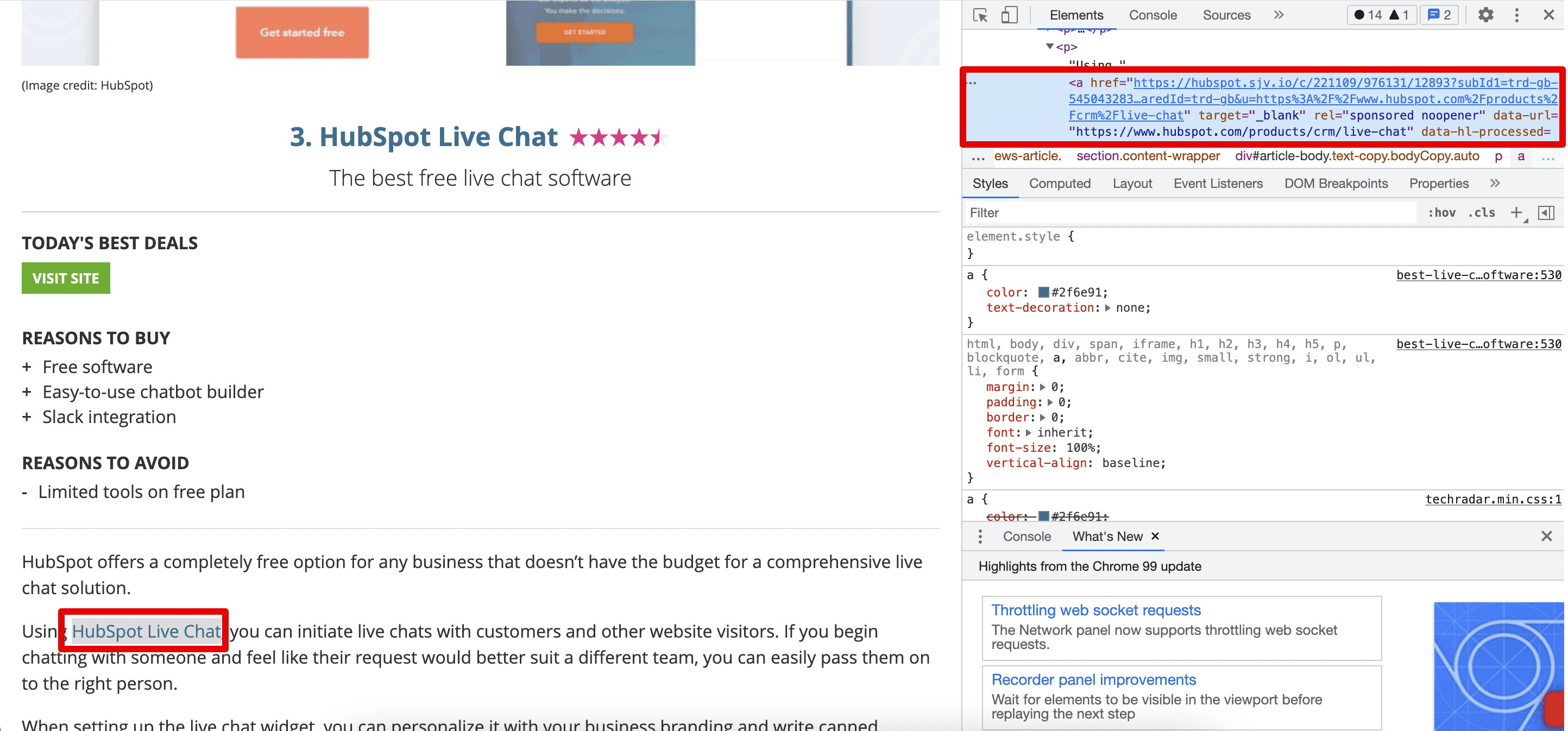
Button links
Button links are eye-catching, clickable elements containing affiliate links that route to a merchant’s website. These links often stand out from the surrounding text with eye-catching colors, clear fonts, and sometimes hover effects. They also typically include a clear call-to-action (CTA) like “Buy,” “Shop Now,” or “Get Deal.” Their appearance depends on the website’s design and specific affiliate program guidelines.
Example of a button link:
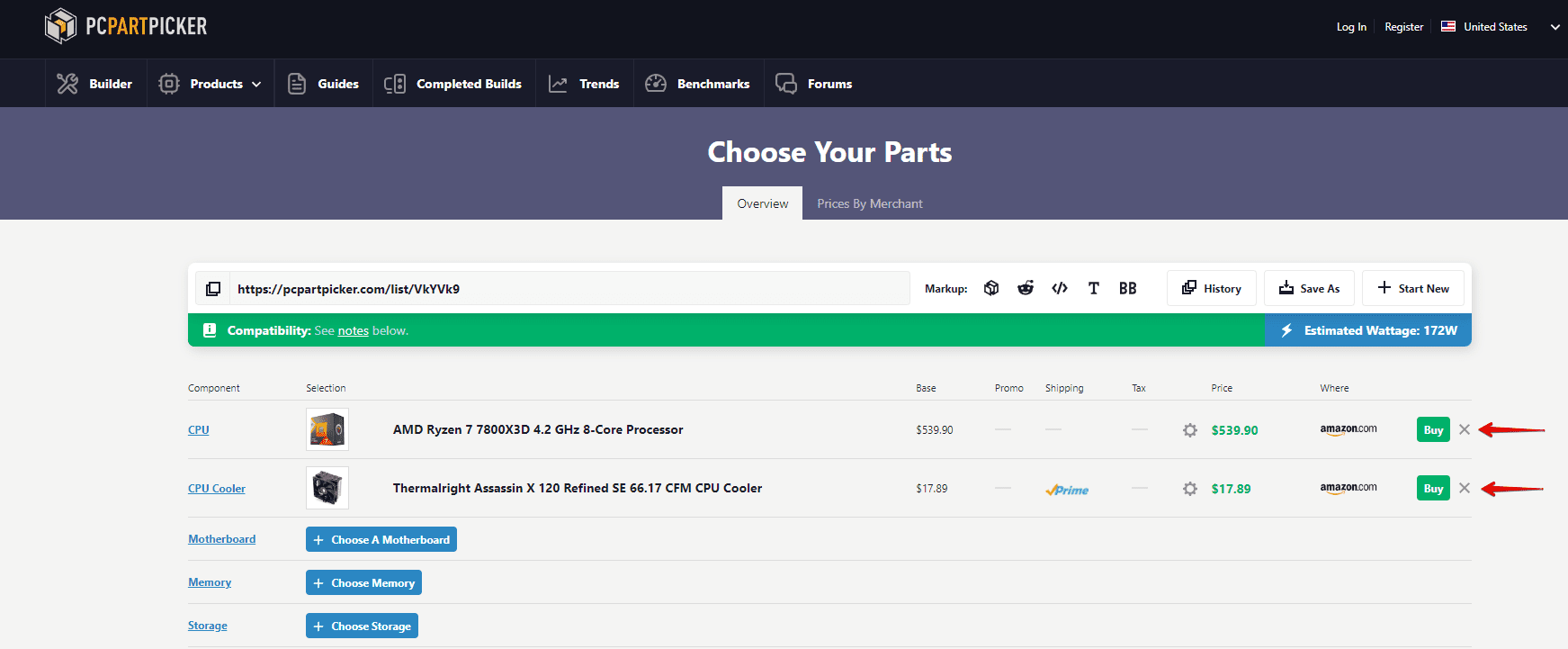
Image links
Affiliate links can also be added to images. These images are clickable and often contain elements that resemble buttons. This makes it clear to the users that the image is clickable. Also, images containing affiliate links normally have a CTA to encourage users to click. When put in the sidebar, clickable images are normally called banners.
Example of an image link added to the banner in the sidebar and of another image added to the text body:

Links in the video description
Finally, YouTube videos can also be used to promote affiliate products. Affiliate links are normally added to the description below the videos. It is also a good practice to highlight the product in the video content to further mention that the respective link can be found in the video description.
Example of an affiliate link in the video description:
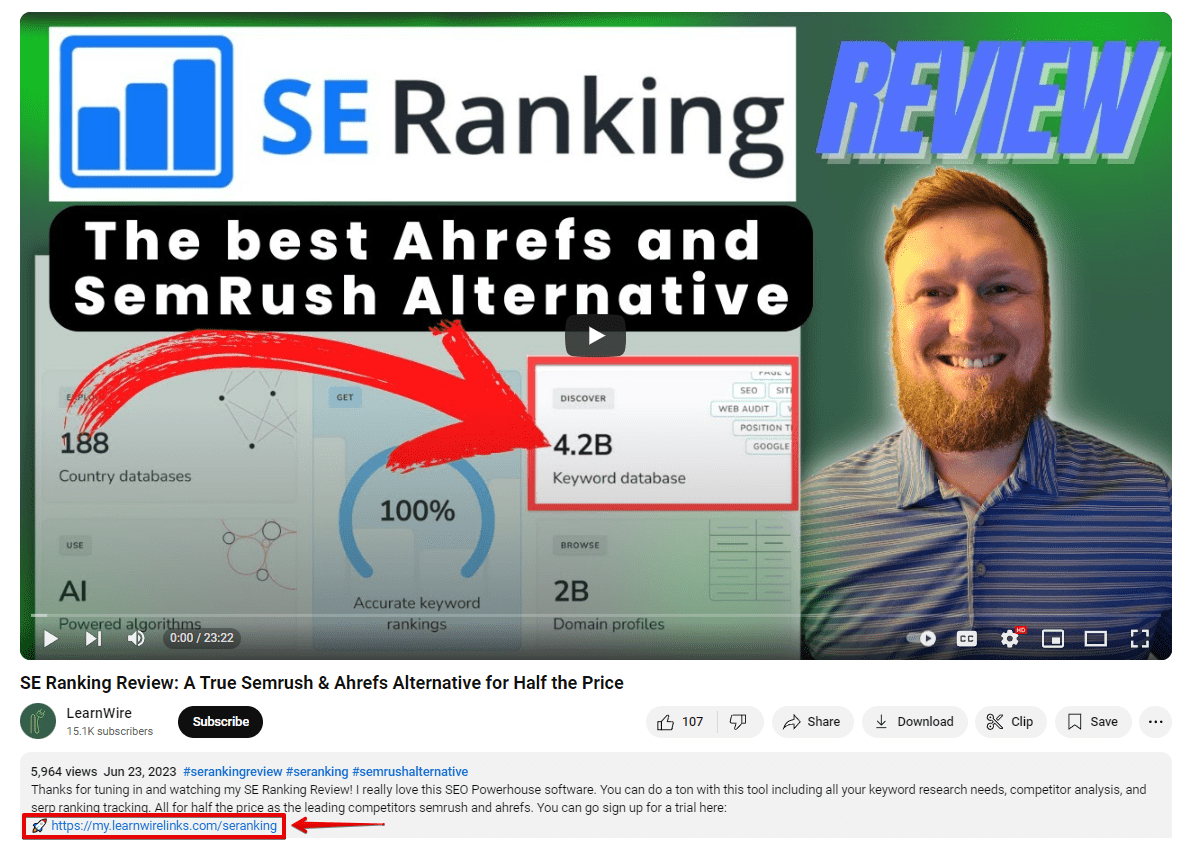
Pop-up/Push Notifications
Pop-up windows and push notifications are also useful for creating and managing affiliate links.
Pop-ups are windows that appear over or under a webpage, often containing special offers or promotions. They come in various formats. Pop-overs appear in front of page content. Pop-unders open behind the current browser window. Banners display within the page layout. Interstitials show full-screen ads before or after expected content. Pop-ups typically include details about an affiliate offer, have a clear call-to-action, and are easy to close.
Example of an affiliate link in the pop-up:
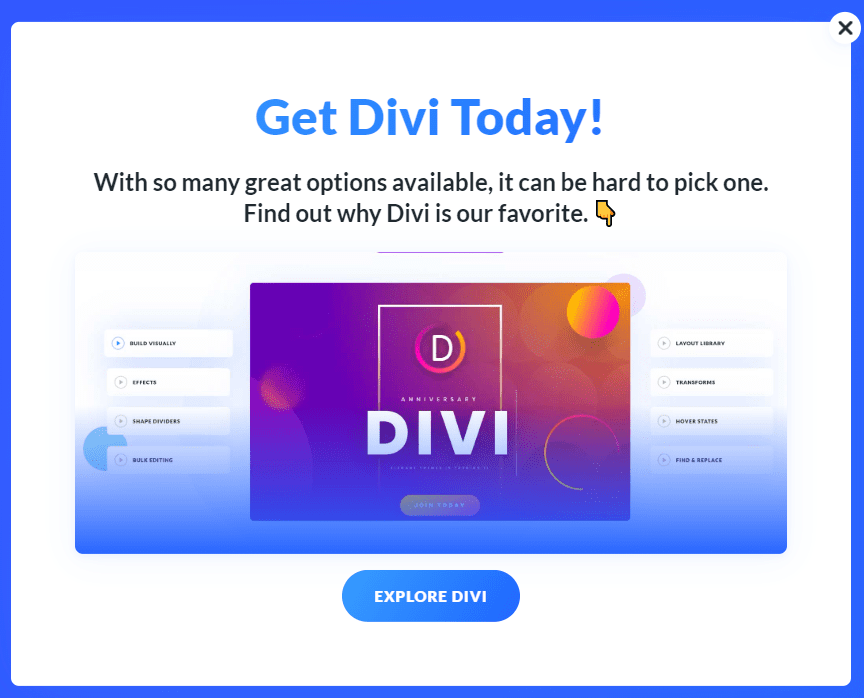
Push notifications, on the other hand, are messages sent directly to a user’s device, even when the user is not on your website. These require the user’s permission to receive them. Push notifications are usually short and to the point, designed to grab attention quickly. However, to be effective, they require extra content creation efforts and a well-designed landing page.
How to Create Affiliate Links
Now, how do you create affiliate links in the first place? Let’s break down each step in detail.
1. Join an Affiliate Program
Sign up for a program (e.g., SE Ranking’s affiliate program). Complete the application process and get approved. Note that affiliate programs have different application and approval processes. Some approve instantly, while others may review your website or social media presence. Many affiliate programs offer immediate access so you can begin creating affiliate links right away. Once you are approved or signed up, you’ll gain access to an affiliate dashboard with personal links and tracking information.
2. Get a personal affiliate link
When you join an affiliate program, the brand typically provides you with your unique affiliate link. If you’re an SE Ranking affiliate, this is how it’ll work.

You can even choose the type of link that suits you best by selecting prepared links or creating your own.
If this doesn’t happen in your affiliate program, you’ll be responsible for creating your own.
3. Create custom affiliate links (if necessary)
Take the website’s URL and add any additional parameters, which will allow you to use advanced affiliate link tracking. Your affiliate program might offer a native tool to help you build the link. Otherwise, you’ll have to use a third-party tool to create it.
Here’s an example from Impact, a platform that allows you to manage multiple partnerships from the same user cabinet. Among other things, it lets you create affiliate links. Just choose the brand, enter the URL you want to add (for example, a pricing page), and then copy the generated link.
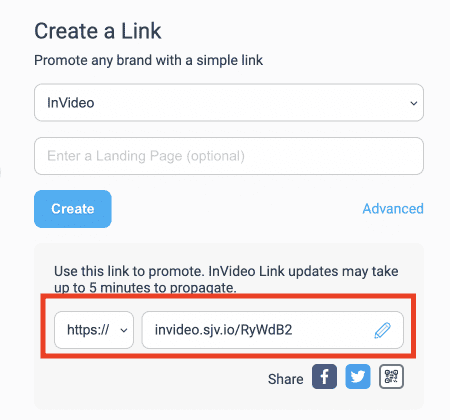
4. Implement and test your link
Once you have your affiliate link, use it to promote that product/brand to your audience. Remember to copy/paste it exactly as it is. Otherwise, affiliate link tracking won’t work. (The URL might not work at all and lead to a 404.)
How to Get Affiliate Links
Network affiliate
You could sign up for one of the following affiliate networks:
- Impact
- ShareASale
- Awin
- Rakuten
- Affnetwork
These networks offer several advantages:
- Access to multiple brands through one platform.
- Category filters to help you find relevant brands (available on ShareASale, Awin, Rakuten, and Affnetwork).
- Niche-specific options for industries like esports, health and fitness, and finance.
To become a network affiliate:
- Sign up for an affiliate network.
- Find a brand in your niche that you can confidently support.
- Apply for their affiliate program through the network.
- Once accepted, get a unique affiliate link.
- Cross-promote the link to earn commissions over time.
Brand affiliate
To become a brand affiliate:
- Find a company or product that you’d feel comfortable supporting (Remember, you’re going to personally recommend this link to your audience).
- Determine if they offer an affiliate program.
- Sign up for their program.
- If accepted, retrieve or create your unique affiliate link.
- Incorporate that link into your website content, social media, lead magnets, and so on.
- Earn commissions when someone clicks your link and takes the desired action.
For instance, SE Ranking’s affiliate program allows you to promote various SEO tools. Once your application is approved, you get a unique link like: https://seranking.com/?ga=3015020&source=link. You can also create a link to any page of the SE Ranking website on your own by adding ?ga=your referral number at the end.
Beyond text links, you can also use different banners and widgets that best fit your platform and audience. Start earning commissions by incorporating these links into your forum comments, blog posts, YouTube videos, or social media content.
How to Use Affiliate Links Properly
Now that you’ve got your affiliate links, it’s time to figure out how to use them effectively. Doing it right boosts engagement, drives conversions, and most importantly, keeps the trust you’ve built with your followers. So, let’s jump into some affiliate link best practices and key tips.
Balance your affiliate link density
When using your affiliate links, more isn’t always better. The goal is to provide value first and monetize second. One rule of thumb is to limit yourself to one affiliate link per article, video, or review. This approach prioritizes quality over quantity and helps maintain good user experiences. Overloading your content with links can hurt user trust and may even get your site flagged by Google as low-quality. This is why you should aim to provide value and educate your audience while subtly monetizing.
Also, make sure to:
- Incorporate links seamlessly into your text or video to avoid forced placements.
- Mix text links, button links, and image links to avoid repetition.
- Ensure links enhance rather than disrupt the flow of your content.
Use descriptive anchor texts and context for your affiliate link
Anchor texts are clickable words or phrases in your content. Good anchor texts give context about the linked product, set expectations for what’s on the other side of the click, and blend naturally with your content.
Your goal is to keep clickable text relevant and informative. For instance, instead of using a long, messy URL, something like “Check out Rank Tracker” will work better.
Another rule to remember: clarity is key. You don’t need to create an award-winning phrase for every link. A simple, straightforward anchor text like “Try SE Ranking” can be more effective than a creative but vague one like “Discover the platform’s power in action”. Clearly state what readers will find for a logical and enjoyable experience.
Always include an affiliate link disclosure
Make sure you always use an affiliate link disclosure. Legally, your followers have the right to know if you get a commission when they purchase something.
So, wherever you use an affiliate link, you must disclose that the link is present, and if people use it to purchase something, you earn a commission. Transparency is important! It helps to also point out that you will never promote something that you don’t personally support.
Example: “Disclaimer: This article contains affiliate links. If you purchase using these links, I earn a small commission. I only recommend tools I know and trust myself.”
Make your affiliate links clean and easy to read
You can always use your exact affiliate link as is when sharing it across your channels. But if you have long links with dynamic parameters, they can be off-putting and cause some readers to hesitate before clicking. Clean links look more professional and make users feel safer when interacting with your content. Just check in with your affiliate program to ensure that link cloaking is allowed and won’t interfere with tracking. Affiliate link cloaking is when you take a longer link and shorten it to make it simpler and easier on the eyes.
Link cloaking is usually set as a 302 redirect, which will forward your traffic to the new URL. For example, the link on the page may look like this: https://www.adamenfroy.com/recommends/growthbar
And the actual link (where a redirect from the above one is sent) would be as follows: https://growthbarseo.com/?utm_source=adamenfroy&utm_medium=partnerarticles
Some brands use redirected links to disguise affiliate links—something you should be careful with, as you shouldn’t deceive users. Trying to “trick” them into clicking on your affiliate link—perhaps by being misleading regarding where that link goes—isn’t a wise idea.
Affiliate cloaking also hides the affiliate’s identity from shoppers. This offers a layer of protection, too, because in hiding the affiliate’s ID, another affiliate can’t hijack it with their own ID and steal the commission.
To cloak your affiliate links, use a plugin like ThirstyAffiliates, Pretty Link, or RH Link Pro.
To make sure affiliate link cloaking doesn’t negatively affect your rankings, check your site positions regularly. Use automatic tools like SE Ranking’s online keywords ranking checker to watch your positions closely and with minimum effort.
Follow Google’s guidelines
Because Google cares about transparency, they recommend labeling affiliate links with rel= “sponsored.” This will make it clear to the search engine that it’s an affiliate link and something you’re making money from. However, we recommend using rel= “nofollow.” A nofollow link tells the search engine not to pass link juice from your site to a website you link to while giving you a legitimate way to use an affiliate link.
Use SE Ranking’s Backlink Checker to analyze any backlink profile.
This hopefully goes without saying, but continue to ensure that your content still provides value outside of your affiliate links and always follow SEO best practices. Do this for both the search engine and for users. Everyone wins.
Note: Google’s Helpful Content Update (HCU), rolled out in September 2023, has made a significant impact on affiliate websites. Many smaller affiliate sites have seen a big drop in traffic because Google favors relevant content that offers real value to users. Despite some recovery after the August 2024 Core Update, many sites are still struggling. Given what we see today, we recommend that affiliate marketers put user needs first and focus on creating high-quality, original content with valuable insights and helpful advice.
How and Where to Promote Affiliate Links
When it comes to how and where to include your affiliate links, think outside the box! If your focus is your website, you have many options. If social media is your jam, there are countless ways to get creative.
Here are a few suggestions:
- Website content: blogs, reviews, tutorials, banners
- Gated content: lead magnets, freebies
- Social media posts on Instagram, Facebook, TikTok, Twitter, Pinterest, LinkedIn
- YouTube videos: Mention in the video itself, include the link in the description
- Digital products: online courses, eBooks, paid downloadable content, masterclasses
- Email marketing: Newsletters, promotional emails
- Paid ads: Google Ads, social media ads (Facebook, Instagram, LinkedIn)
For example, let’s say you’re an SE Ranking affiliate. You could create a lead magnet that shares the top five metrics content creators should care about. Then, highlight how easy it is to monitor your metrics using SE Ranking and drop your affiliate link.
Or, you might do a series of LinkedIn posts, offering quick tips for improving your organic traffic, rankings, or bounce rate. Leave your affiliate link on your profile page for anyone interested in SE Ranking.
You can also use Reddit or “parasite SEO” (publishing content on high-authority platforms instead of your site) to promote affiliate links. However, these methods can be risky. Many subreddits ban affiliate links, and overuse of affiliate links on third-party platforms can lead to account suspensions. Always check platform guidelines to ensure your affiliate links are permitted and follow promotion rules.
If you share affiliate links, focus on being a valuable community member. Talk about your own experiences with the product. Maybe share a screenshot of how, for example, SE Ranking improved your SEO, or offer practical tips you’ve learned. This approach feels more authentic and genuinely helps others. The best promotion comes from truly believing in what you’re sharing.
Whichever method(s) you choose for affiliate link promotion, always provide value to your users first.
Can You Use Links from Multiple Affiliate Programs on One Site?
You sure can, and depending on your traffic, it can increase your income. This approach is common for listicles and round-up articles, such as “The Top 10 Tools for . . .”
However, here are some things to keep in mind:
- Check brand policies: Make sure the competing brand allows these practices.
- Promote authentically: Only promote things you would use (or currently use). If you aren’t a fan, you shouldn’t recommend it to others. They trust you, so being dishonest about how you feel about a product could hurt your reputation and your relationships.
- Provide balanced reviews: Consider creating a review about a product you don’t like and describe its drawbacks. This is still valuable content that your readers and viewers will appreciate. Then, suggest an alternative that you can vouch for, and drop your affiliate link there.
- Avoid overlinking: While you can include multiple links, avoid over-linking in a single piece of content. This is a general rule of thumb when it comes to content creation. Overlinking hurts the user experience and can also look like spam to Google. Links should be thoughtful and intentional.
- Keep it natural: Work affiliate links organically into your content so that it feels more seamless and less salesy. As opposed to saying, “Buy this product!” talk about why you love it and how it helped you, and then gently direct people to the webpage with more information about it.
How to Track Affiliate Links
The only way to know how your affiliate links are performing is to keep a close eye on your numbers. The program you’re a part of might offer a platform/dashboard where you can view your metrics. You’ll want to keep an eye on things like:
- Earnings per click (EPC), which is the average amount of money you earn when someone clicks on your affiliate link.
- Clicks (the number of times your affiliate link was clicked) and actions (the number of sales/leads you’ve managed to drive from your affiliate link).
- Conversion rate is the number of users who performed your desired actions, divided by the number of users who clicked. You want your conversion rate to be high. The average conversion rate varies across industries, but if it’s less than 3-5%, check out our conversion rate optimization guide.
- Revenue is the amount of money you’ve earned through the chosen affiliate program.
Use Clarity and Hotjar
Another way to track your performance is by using tools like Clarity and Hotjar that generate heat maps, reveal where users are clicking, and show you which part of your pages users are lingering on (and what they’re flying past). This can help you better understand how people interact with your page, what they like, and what’s failing to catch their attention. For instance, if your affiliate link only appears at the very bottom of the page, and users quickly only read up to the middle of the page before leaving, consider moving the link up higher, perhaps above the fold.
Track with Google Analytics 4 (GA4)
Google Analytics 4 can also help you keep your finger on the pulse. You can use this tool to check the traffic of your focus pages containing affiliate links. While monitoring the traffic to these pages, keep an eye on a few key metrics:
- Clicks: Set up event tracking in your GA4 property to monitor clicks on your affiliate links. This involves adding a specific tracking code to monitor outbound clicks. This shows you which links perform best and how users interact with them.
- Page views help you gauge if the traffic is where it should be (or too low).
- The average time on the page (combined with a heat map!) reveals how interested users are in your content.
- The bounce rate indicates how many people leave your site after viewing a specific page.
Use SE Ranking
If you rely mostly on SEO to bring traffic to your website, use SE Ranking to immediately see the whole picture: how much traffic you get to pages on your website that contain affiliate links, how users behave on these pages, and which keywords drive the most traffic. To do so, connect Google Analytics 4 and Google Search Console to SE Ranking—all major metrics will be displayed on one unified dashboard.
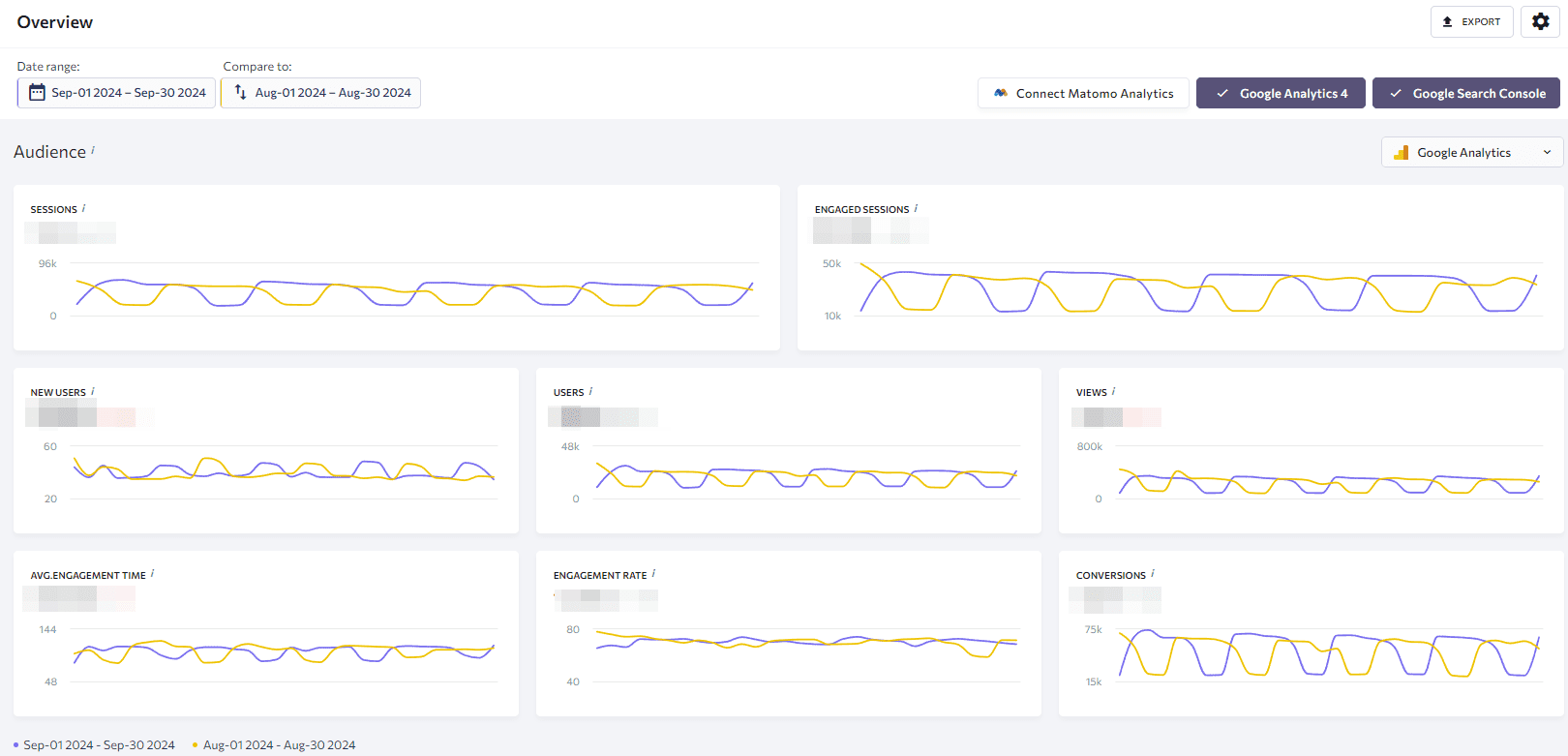
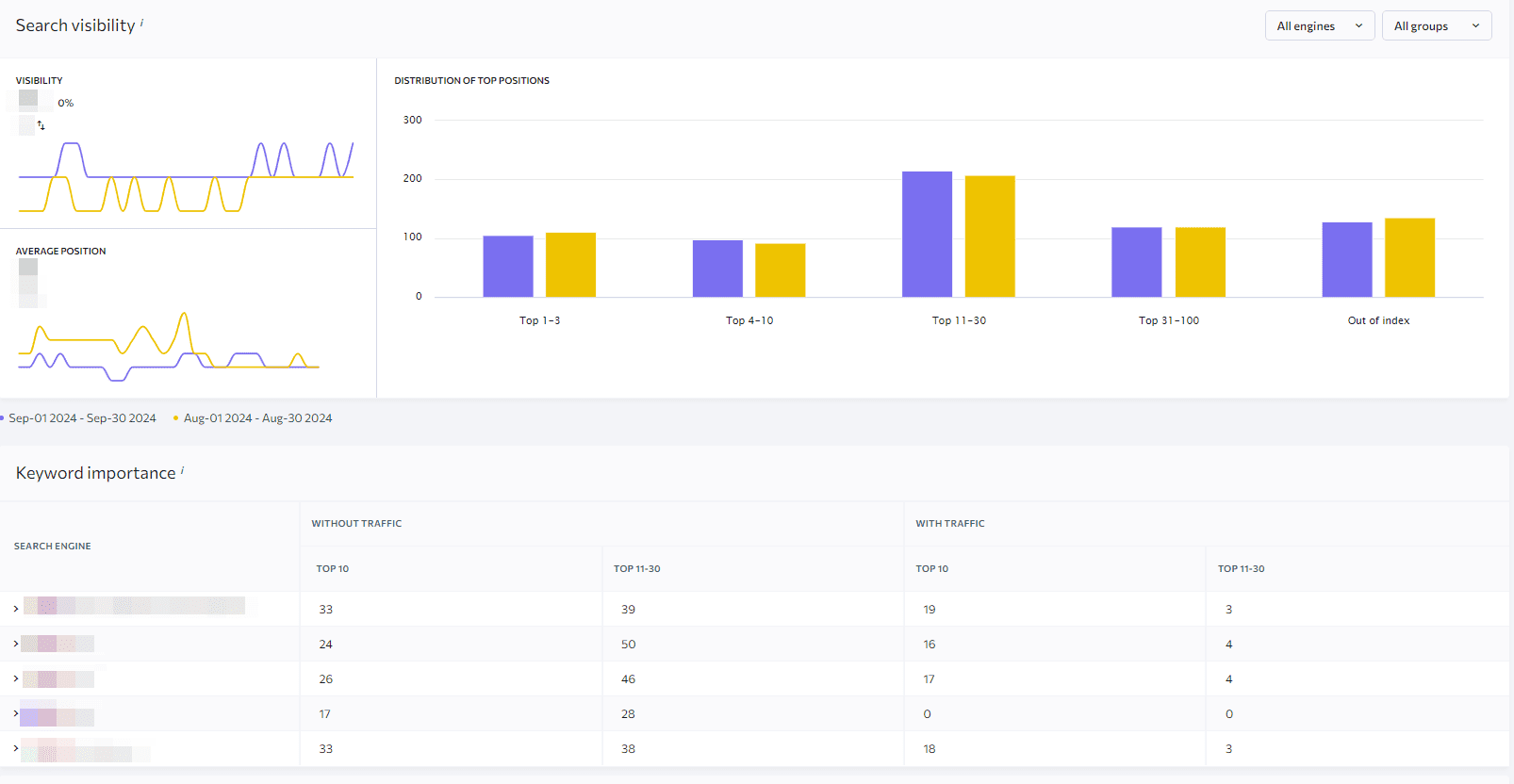
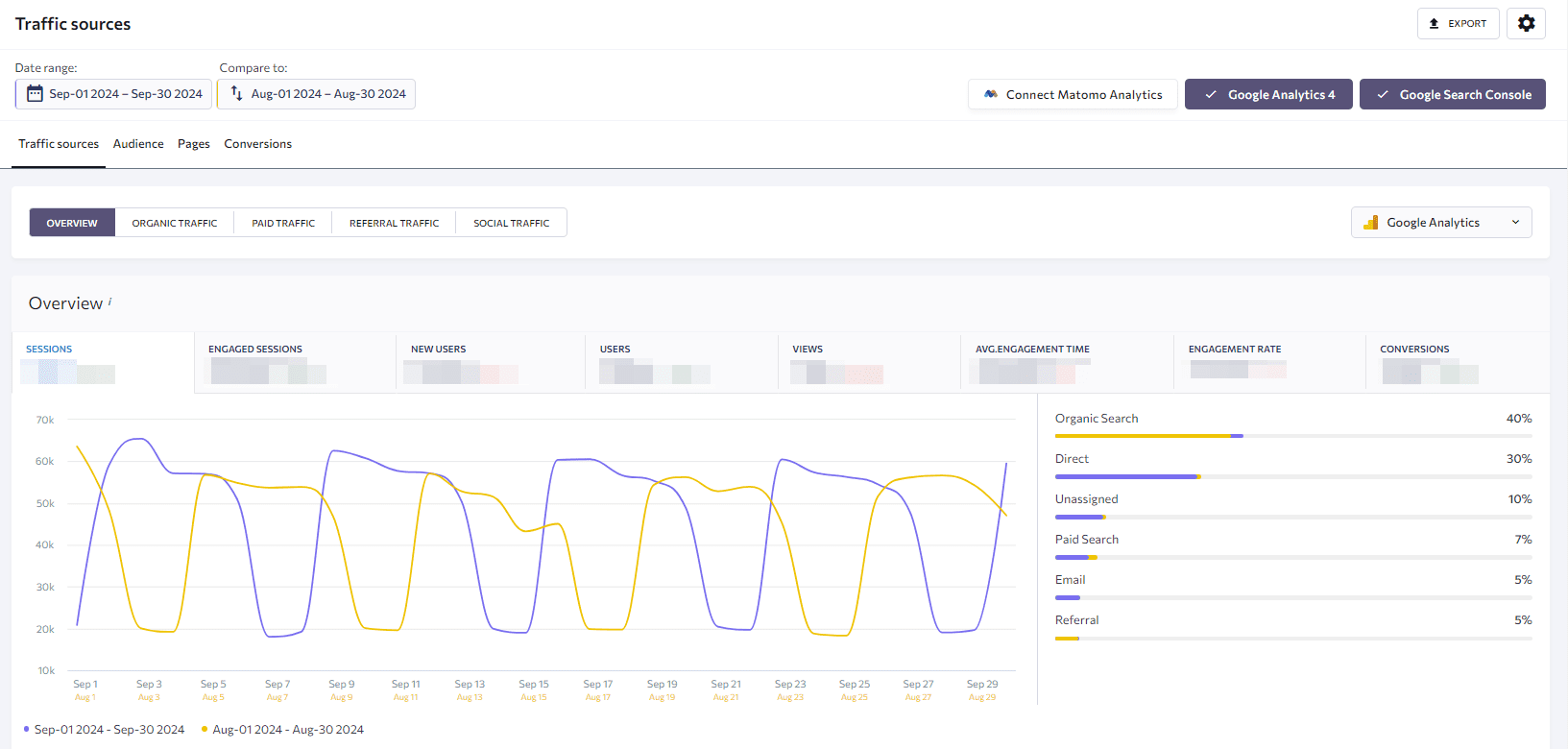
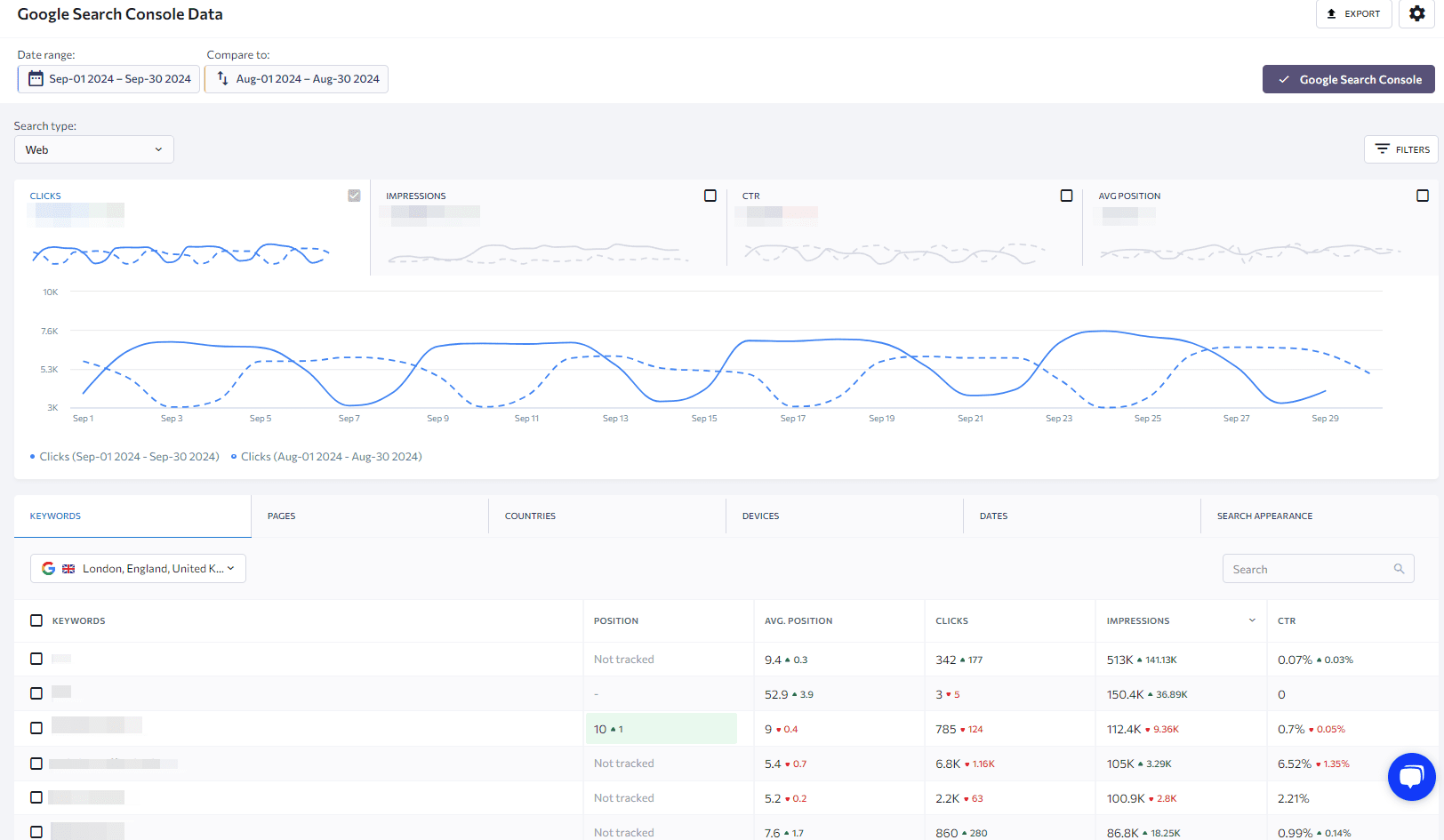
It streamlines your processes and aggregates all the most important data under one roof.
This data can help you better understand what your users like and dislike. You can adjust your content accordingly to get more people on your content, encourage them to stay longer, and boost engagement with your affiliate links.
For instance, if a page’s bounce rate is high, consider improving the internal linking and using a stronger CTA. If people aren’t spending much time on the page, try breaking up the text and adding more images, videos, or GIFs. Heat maps can tell you where people are lingering—and what they’re scrolling past.
Analyze UTM tags
An affiliate link may contain UTM (Urchin Traffic Monitor) tags. UTM tags make it easy to monitor the traffic coming to your page from a specific source. There are two parts of UTM tags: the tracking variable and the parameters. Parameter options include the source, medium, campaign, keyword, and content.
Here are a few examples of affiliate links with UTM tags:

To clear up additional information on the links provided above, let’s briefly discuss major UTM parameters:
- utm_source allows you to identify the website the traffic comes from—it can be one of the websites you run, your Facebook page, a YouTube video, etc. It’s essentially the place where you can add the link. The first link listed above was added to one of the reviews on adamenfroy.com blog, and the second one was from YouTube.
- utm_medium tag normally indicates the marketing channel used to bring the traffic—e.g. organic search, PPC, social media, emails, etc. Again, it’s up to you to single out mediums relevant to your business. This is what we observed in the examples above listing partner articles and cp content as mediums.
- utm_ campaign is straightforward—it is used to single out the marketing campaign associated with the link. In the second example, we have a lengthy campaign name that was probably launched in February 2022 and offered some coupons.
- utm_content is an optional tag. It is used when multiple links point to the same site from a common source and medium—for example, two links with different calls to action (CTAs) added to the same landing page. The parameter will help you identify which of the two CTAs worked best.
- utm_term is used to track PPC keywords.
While UTM tags provide you with a heap of data, affiliate programs will often generate links like the ones listed below:

Here, id=530454 and ga=1658897 are affiliate marketers’ unique IDs to help businesses identify the traffic sources to their sites.
Final thoughts
Affiliate marketing is a marathon, not a sprint. Strategy matters, and if you play your cards right, it can be an excellent source of passive income. The key? Always put your audience first.
Choose products you genuinely believe in and create content that helps your readers. Be upfront about your affiliate links, and use them wisely – not too many, not too few. Mix up your promotion channels, from your blog to social media, and keep an eye on what works best for your audience. Follow these affiliate link best practices to reap these rewards. Good luck!

